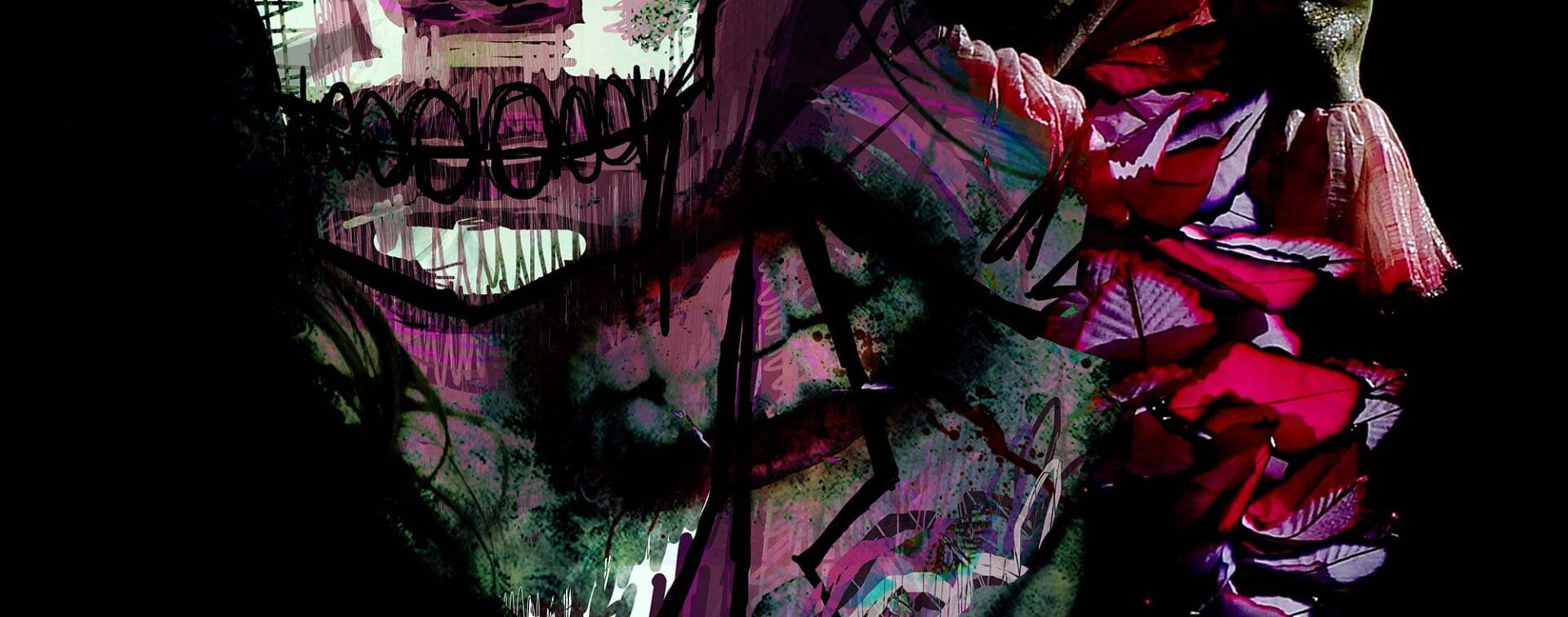Alexander McQueen: The Visionary Behind Fashion’s Dark Romanticism
New York City hums in the background, a pulsing heartbeat as timeless as the art within the MET’s storied walls. On a quiet afternoon, I wander through the halls, eyes drifting over centuries of masterpieces, not yet realizing I’m about to stumble upon something that will shift my creative universe.
I’m here to soak in inspiration, to get lost in the kind of art that breathes life back into you. I roam freely, letting my curiosity guide me. I find myself standing before an exhibition I hadn’t expected: Alexander McQueen: Savage Beauty. The name, bold and unapologetic, sends a shiver through me and the hairs on my arms stand up. I step inside, not quite sure what to expect but am feeling drawn in by an indescribable pull.
As I move slowly from piece to piece, the darkness and individuality of McQueen’s art grips me instantly. It’s like walking through a fever dream—a world where beauty and brutality hold hands, where the fabric seems to whisper secrets from another world. I can’t help but feel a pang of regret, realizing that I’m discovering this after McQueen is gone. I wonder how I hadn’t known about him until now, and I feel foolish for missing McQueen’s artistic force while he was alive. Yet, as I stand there, surrounded by his hauntingly beautiful creations, I’m reminded that I’m on an endless journey of discovery. I need to keep exploring, to be surprised, to stumble upon the greats and feel the impact of their work as if they’re speaking directly to us. McQueen’s work leaves me breathless, and challenges me to dig deeper, to not be afraid of the darkness, and to bring intensity into my own creations.
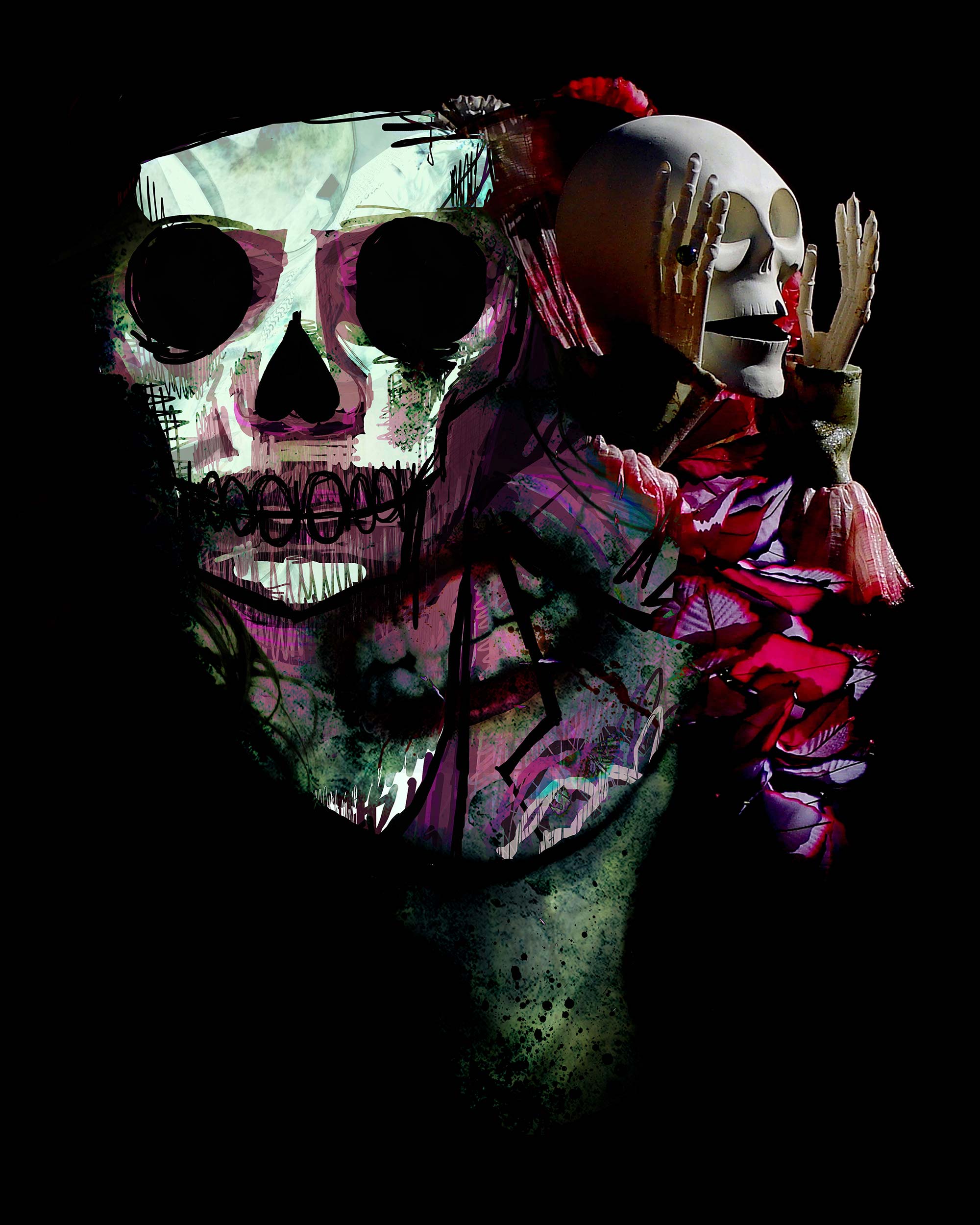
Monster by Chris “MUG5” Maguire – created in 2011 as a direct creative response to the haunting beauty of Alexander McQueen’s work MUG5 witnessed at the MET.
At RIOT, we’re no strangers to the allure of the unconventional. We, too, crave to push beyond the surface, unafraid to explore the shadows in search of something that demands to be felt. McQueen’s legacy doesn’t just inspire us; it fuels a fire within us to carve our own path, one where the most beautiful things are often born from the darkest places. So here we are, reflecting on Alexander McQueen’s world, honoring his legacy, and letting his fearless spirit echo through our journal in a hope that someone else discovers McQueen’s genius right here. Here’s to those who teach us that true art leaves a scar, and to the artists who forever alter the way we see the world.
Foreword by Executive Creative Director Chris “MUG5” Maguire
The Vision of Shadows: Where Dark Romanticism Meets Innovation
Alexander McQueen’s world was one of contrasts, a tapestry woven from the threads of light and darkness, beauty and brutality. His designs were unapologetically bold, emotionally intense, and deeply provocative, moving fashion into uncharted realms. McQueen crafted layered narratives that spoke of life and death, love and loss, beauty and decay. He used the runway as a stage, turning it into a place where emotions were raw, where societal norms were torn apart, and where fashion became a language to explore the human condition.
“For me, what I do is an artistic expression which is channeled through me. Fashion is just the medium.”
Born as Lee Alexander McQueen in 1969, his roots lay in London’s gritty East End, a far cry from the glamorous fashion capitals he would later come to dominate. Growing up in a working-class family, McQueen discovered his passion for design at a young age, sketching dresses and creating garments for his sister. He was drawn to the art of storytelling through fabric, using his hands to shape his own world that defied the harshness of reality.

Savile Row, London – where Alexander McQueen’s tailoring journey began, shaping his technical foundation and precision. Image by Dave Fergusson / Suits you sir, via Wikimedia Commons, licensed under CC BY-SA 4.0.
At sixteen, McQueen left school and took his first step into the world of tailoring, studying at Newham College and later honing his skills on Savile Row. This world of precision and craftsmanship became his foundation, instilling in him a love for detail and technique. He trained with prestigious houses like Anderson & Sheppard and Gieves & Hawkes, mastering the art of bespoke tailoring. But McQueen’s true flair for the dramatic found its outlet at Angels and Bermans, a theatrical costume design company where he first learned to merge the traditional with the theatrical.
McQueen’s early works were a study in contrasts, reflecting his obsession with dark romanticism. His designs drew inspiration from the Victorian era’s obsession with death, the brutal realism of artists like Goya, and the eerie, surreal world of Hieronymus Bosch. These influences were integral to his creative vision, using the past as a lens through which he examined the present, crafting pieces that felt like artifacts from another world. In his hands, fabric became a medium for rebellion against the constraints of tradition, a canvas on which he painted scenes of defiance and transformation, a fearless exploration of what it means to be human. McQueen’s designs challenged the viewer, demanding confrontation of the beauty and brutality that lie within all of us.
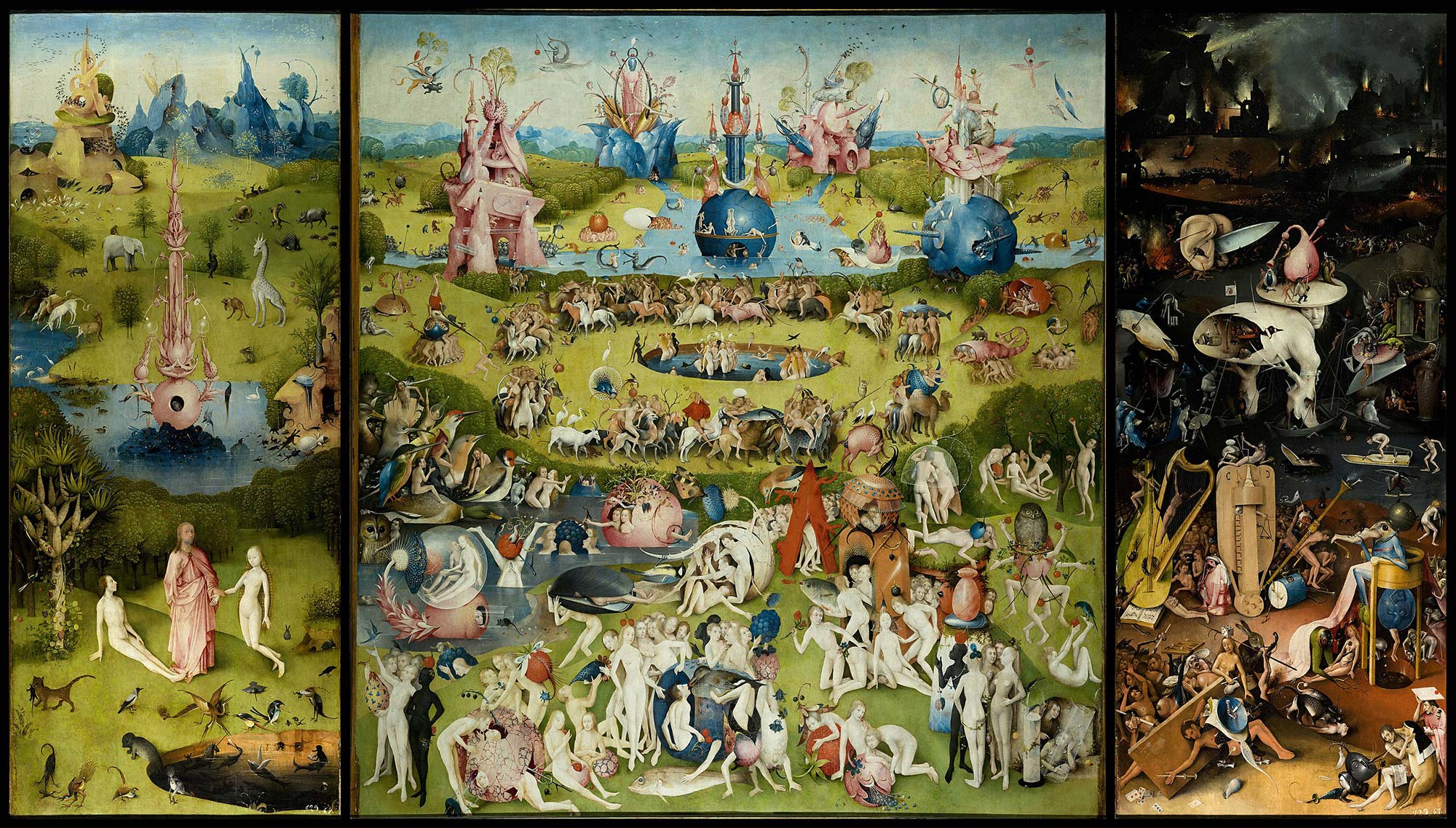
The Garden of Earthly Delights by Hieronymus Bosch – a major inspiration for Alexander McQueen’s exploration of beauty and chaos. Image via Wikimedia Commons, public domain.
As he famously said, “Fashion should be a form of escapism, and not a form of imprisonment.” McQueen’s work liberated not just the body, but the mind. He empowered women through strong silhouettes, challenging conventional depictions of softness and delicacy. His designs projected confidence and independence, giving women a sense of strength and authority that transcended mere aesthetics. McQueen’s creations were for those unafraid to embrace their individuality, to step boldly into the shadows and find their own beauty in the darkness.
“I find beauty in the grotesque, like most artists. I have to force people to look at things.”
Long before “inclusivity” became a buzzword, McQueen was already redefining beauty standards, using non-traditional models to challenge the fashion industry’s narrow ideals. His runway shows featured a diverse range of models—people of different ages, body types, and backgrounds—breaking the mold of the industry’s long-held exclusivity. His choices were often met with criticism, and he faced backlash from those who viewed fashion as a place for the elite few. But McQueen’s refusal to conform resonated with audiences and paved the way for a more inclusive vision of beauty in fashion. He showed the world that fashion, like art, belongs to everyone, and that its power lies in celebrating the unique, the unconventional, and the fearless.
The Provocateur: Highland Rape and the Art of Confrontation
In 1995, Alexander McQueen presented his Highland Rape collection—a show that shocked and captivated the fashion world. With torn fabrics, bruised-looking makeup, and models staggering down the runway, McQueen was telling a story. This collection was raw, unsettling, and evocative. Many misunderstood it as misogynistic, but McQueen’s message was far from what critics assumed. He used fashion to confront the brutal history of England’s treatment of Scotland, a reflection of his own Scottish heritage and a defiant statement on colonial violence.
“It is important to look at death because it is a part of life. It is a sad thing, melancholy but romantic at the same time.”
The collection’s name alone sparked outrage, yet McQueen was unflinching. He used these reactions to start a conversation, blurring the line between fashion and performance art. Highland Rape was a rebellion against the industry’s conventions, a declaration that beauty and suffering often walk hand in hand. This wasn’t fashion as we knew it; it was fashion as cultural critique, an exploration of identity, power, and trauma. Through pieces that appeared to be violently torn and shredded, McQueen subverted traditional notions of beauty, presenting women not as passive figures but as powerful survivors. It marked the beginning of McQueen’s reputation as a provocateur—a designer willing to tackle difficult themes and to use fashion as a medium for visceral, confrontational art. It was a watershed moment that set the stage for his future collections, where he would continue to push boundaries and redefine what fashion could represent.
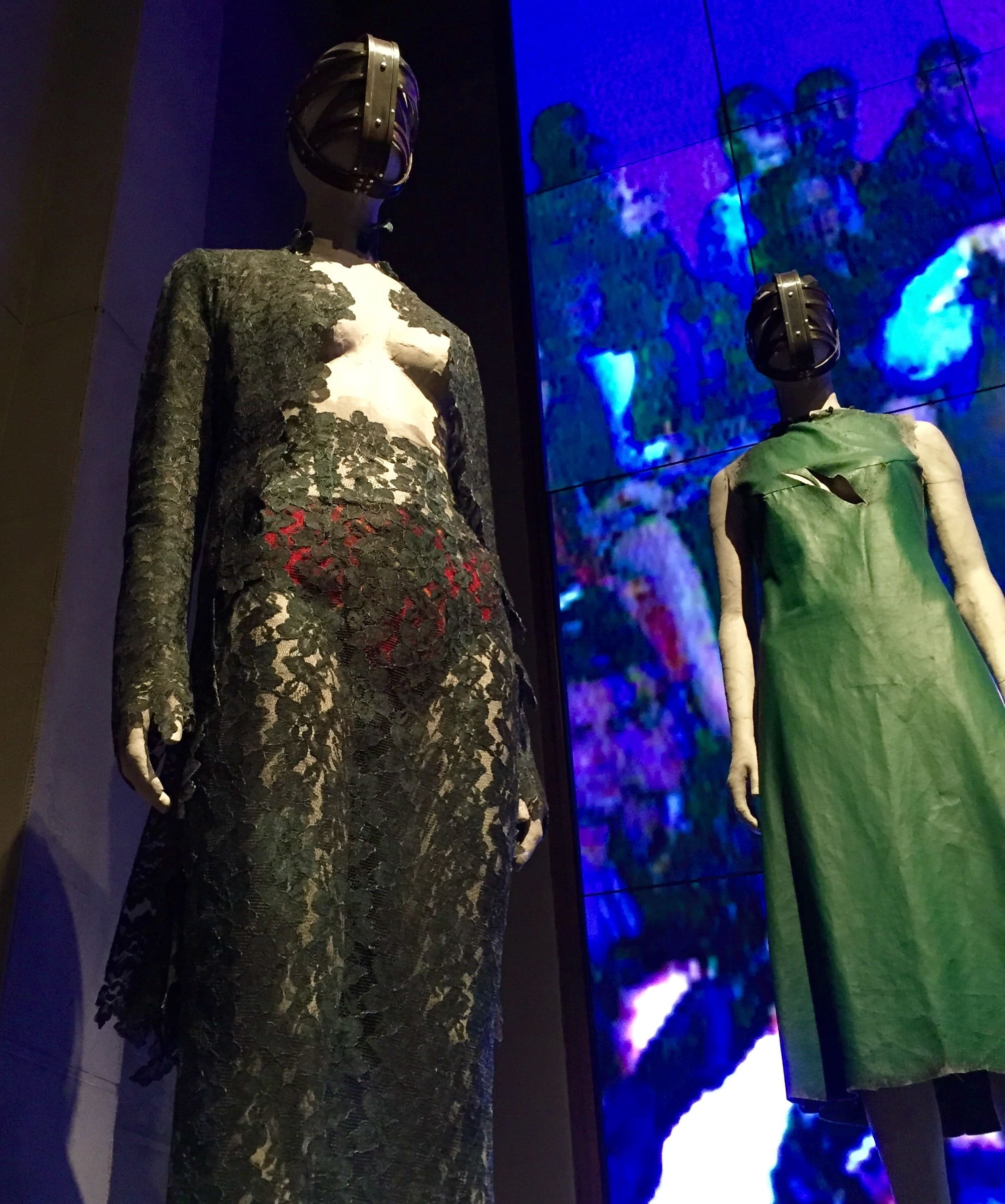
Designs from Alexander McQueen’s Highland Rape collection at the Savage Beauty exhibition. Image by Isabelle Schultz, via Wikimedia Commons, licensed under CC BY-SA 2.0.
Highland Rape challenged viewers to look beyond the surface, to confront uncomfortable truths embedded in history and culture. McQueen’s art dared us to feel something raw, something real. In this moment, he was more than just a fashion designer; he was a storyteller, a historian, and a revolutionary.
The Surreal Mind: Voss and the Theater of Madness
In 2001, McQueen staged his Voss collection, a haunting and surreal exploration of mental illness and societal confinement. The show began with an eerie twist—guests were seated in front of a mirrored glass cube, forced to stare at their own reflections for nearly two hours. When the lights finally dimmed and the mirrors cleared, the audience was drawn into a padded, asylum-like space, transporting them into the depths of McQueen’s dark, twisted vision.
“Here was this guy who not only showed clothes but put emotion onto the catwalk, whose own soul had been shaken by life and who knew how to shake people up because of that.”
Inside the glass box, models moved like specters, clad in designs that melded the grotesque with the sublime. Each piece embodied an emotional rawness, reflecting themes of entrapment and alienation. For McQueen, this collection wasn’t about presenting wearable fashion; it was a commentary on society’s treatment of those who live on the fringes. He dared viewers to confront their own discomfort, to question what it means to be ‘normal’ in a world that often condemns individuality.
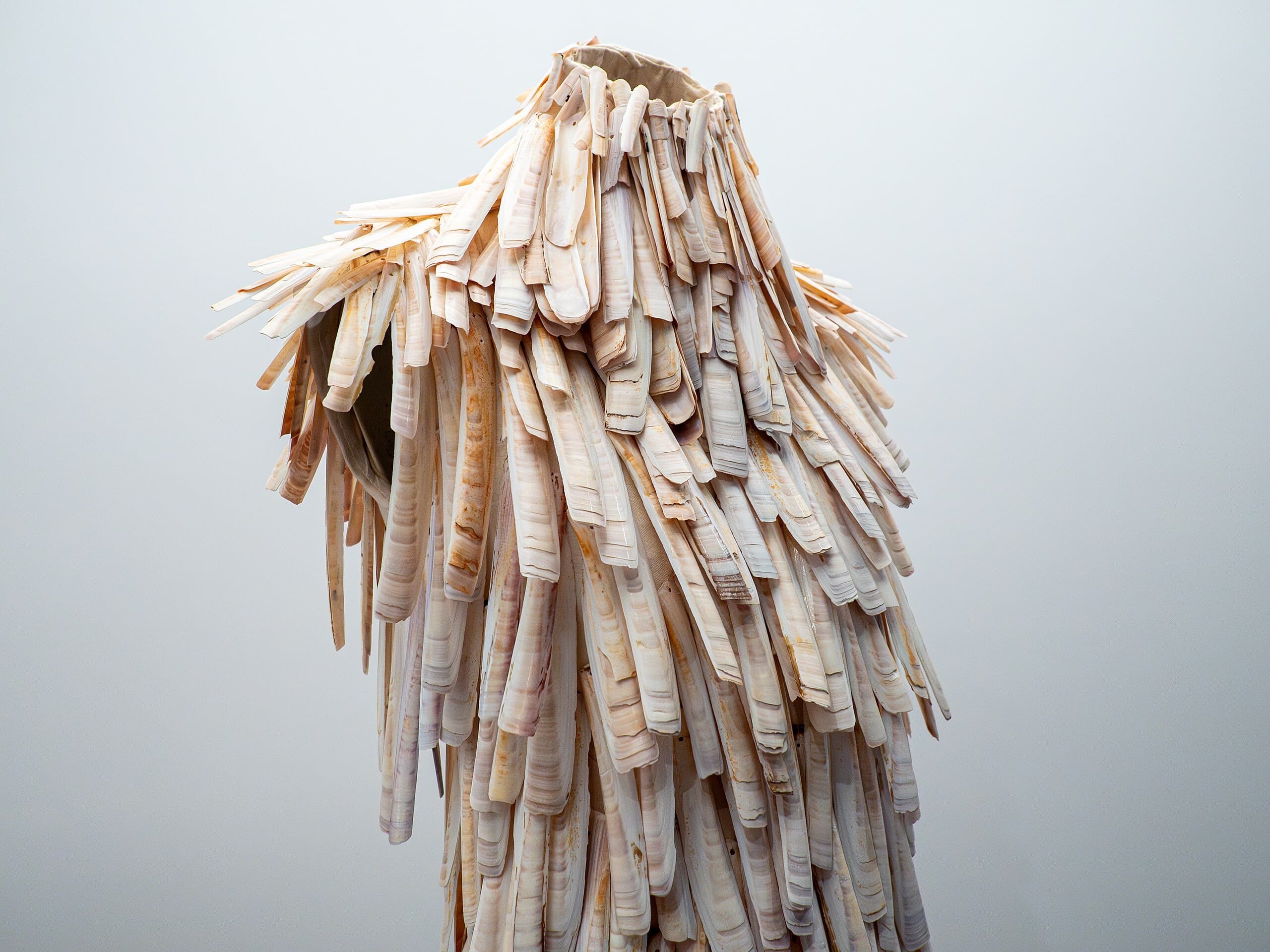
Alexander McQueen’s Clamshell Dress from the Voss collection, showcased at the MET’s Sleeping Beauties exhibition. Image by Rhododendrites, via Wikimedia Commons, licensed under CC BY-SA 4.0.
The finale was unforgettable—McQueen shattered the glass box to reveal writer Michelle Olley, lying nude on a table adorned with live moths. Inspired by photographer Joel-Peter Witkin’s Sanitarium, this closing image was a stark reminder of transformation amid decay, and beauty emerging from darkness. Voss was a journey into the human psyche, a performance that left audiences shaken, disturbed, and undeniably captivated. McQueen had once again pushed the boundaries of fashion, using the runway as a stage for existential contemplation. In Voss, McQueen was questioning the very nature of reality, identity, and our willingness to accept beauty in the grotesque. McQueen had thrown down a gauntlet, challenging society to find beauty in places it had always feared to look.
Plato’s Atlantis: The Future of Fashion and the Merging of Worlds
In 2010, Alexander McQueen unveiled Plato’s Atlantis, a collection that would become his final fully realized vision. Inspired by the themes of evolution and climate change, McQueen transformed the runway into a futuristic underwater world, with models dressed in reptilian prints and alien-like silhouettes that blurred the line between human and otherworldly life. Plato’s Atlantis was a reflection on humanity’s impact on nature and a warning about the consequences of environmental destruction.
“Give me time and I’ll give you a revolution.”
Plato’s Atlantis marked McQueen’s first foray into digital innovation. The runway show was the first-ever to be live-streamed, bringing McQueen’s futuristic vision to a global audience and solidifying his role as a pioneer in merging technology with fashion. His designs featured digitally printed fabrics, intricate textures, and exaggerated shapes that suggested an evolved species adapted to a submerged world. In McQueen’s vision, fashion became a medium to explore our evolution and the potential collapse of our natural world. The collection included his iconic Armadillo Boots, towering creations that symbolized humanity’s transformation in the face of environmental change. McQueen’s models appeared as if they were emerging from the depths, creatures of a world where nature and technology had fused. This haunting, beautiful, and thought-provoking show captured his message: that fashion could confront issues larger than itself, and that we are part of a world where the lines between beauty, technology, and nature are increasingly intertwined.
“His work gave me a sense of belonging, a boldness I had never known before.”
The intersection of Alexander McQueen’s Plato’s Atlantis collection and Lady Gaga’s music video for “Bad Romance” symbolizes a powerful moment where fashion and pop culture collided. Gaga premiered “Bad Romance” at the Plato’s Atlantis runway show, and the video features McQueen’s iconic designs, including the towering Armadillo Boots. This collaboration brought McQueen’s futuristic vision to a global audience, merging his themes of evolution and environmental transformation with Gaga’s theatricality. In many ways, Gaga and McQueen shared a kindred spirit—they both sought to push boundaries and challenge societal norms. By incorporating the Bad Romance video, we see how McQueen’s influence extended beyond the runway, shaping a cultural dialogue that blurred the lines between fashion, art, and music. For example, his use of robotic digital printing showcased his ability to blend technology with craftsmanship, paving the way for a new era in fashion.
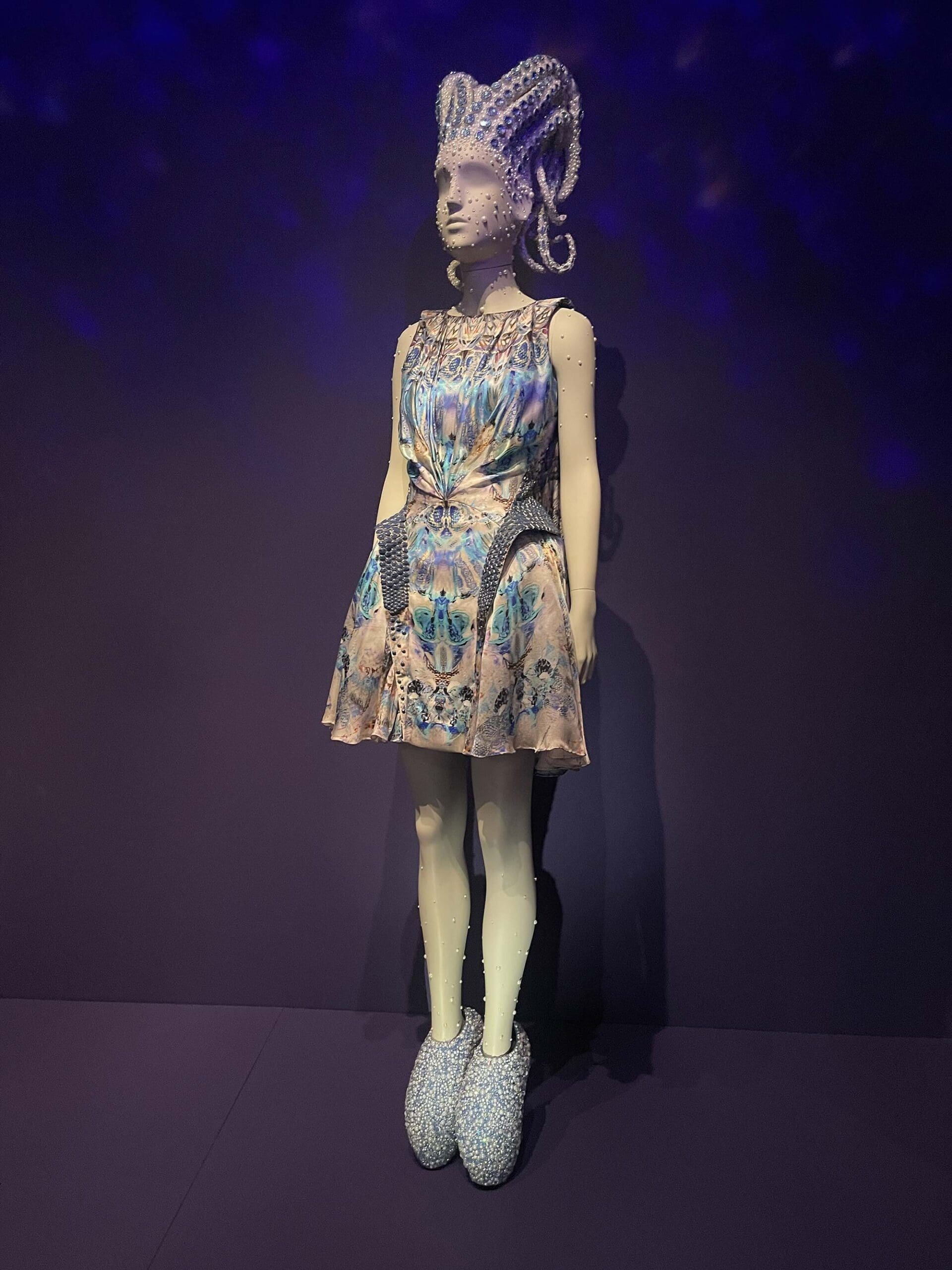
Alexander McQueen’s Clamshell Dress from the Plato’s Atlantis collection, on display at Musée des beaux-arts du Québec. Image by LilianaUwU, via Wikimedia Commons, licensed under CC BY-SA 4.0.
With Plato’s Atlantis, McQueen challenged everyone to consider our role in shaping the future. His work remains a powerful reminder that art can illuminate, provoke, and drive change in the way we see ourselves and our world.
Crafting the Unimaginable: McQueen’s Technical Genius Unleashed
Beyond his aesthetic, McQueen was a technical master, bringing unparalleled skill to his work. His early training on Savile Row, known for its meticulous craftsmanship, gave him a foundation that few designers could rival. His precision in tailoring allowed him to challenge conventional shapes, creating garments that were architectural yet fluid. His technical prowess was honed further when he joined Givenchy as the head designer in 1996. During his time at Givenchy, McQueen’s work became more refined, yet he continued to subvert traditional fashion codes, merging classic tailoring with his signature edge.
“Fashion is about fantasy as well as being commercial. We don’t all want to dress like soldiers in the same uniform. You have to push forward and realize the power of fantasy and escapism.”
At Givenchy, McQueen began experimenting with materials and techniques that would become hallmarks of his collections. He combined his knowledge of tailoring with an appetite for innovation, working with materials like glass, feathers, and metal to transform clothing into wearable art. His first Givenchy show, La Poupée, showcased a delicate yet rebellious approach, filled with daring silhouettes and unexpected textures. His time at Givenchy allowed him to work within the framework of a traditional couture house while continuing to carve out a space for his own identity as a designer.
McQueen’s early Givenchy collections blended classical inspirations with futuristic aesthetics. His debut haute couture show for the Spring 1997 collection was steeped in the mythos of Greek gods, with models draped in white and gold fabrics and donning elaborate headpieces that evoked a modern-day Olympus. This collection showcased McQueen’s ability to blend traditional couture with his own sense of theatricality, bringing history to life on the runway. His exploration of mythology at Givenchy created a new standard in haute couture, imbuing it with a sense of drama and narrative that had previously been absent.
However, McQueen’s collections weren’t confined to classical inspirations. By 1998, he had taken on a darker, more futuristic tone with his Blade Runner-inspired Fall/Winter collection. This show drew from Ridley Scott’s dystopian vision and featured industrial silhouettes and metallic fabrics, showing how McQueen could pivot from classicism to sci-fi with ease. His ability to fuse elements from different worlds—mythology, cinema, history—allowed him to redefine Givenchy’s image during his tenure, and his risk-taking approach brought new life to the house.
McQueen’s inspiration often came from the natural world, and he channeled this into his technical work. His fascination with the organic, the raw, and the primitive pushed him to explore unconventional materials. This connection to nature informed his creations, as he sought to capture the beauty and brutality of the natural world within each piece. McQueen’s technical genius was not just about mastery of craft but about his ability to envision fashion as a medium capable of transformation, much like the forces of nature that inspired him.
During this time, McQueen was also quietly building his own brand, which he had originally founded in 1992. The growth of his label reached new heights in 2000 when Gucci acquired a 51% stake in Alexander McQueen’s company. This partnership provided the capital and creative freedom McQueen needed to leave Givenchy and fully invest in his own designs. With the resources to expand his brand, McQueen was able to push the boundaries of fashion even further, establishing his name as one synonymous with provocative, groundbreaking art in the form of couture.
Legacy and Influence: A Rebellion That Endures
Alexander McQueen’s influence on the world of fashion is monumental. His work redefined what was possible on the runway, transforming it into a stage for emotional, theatrical performances that transcended. McQueen was an artist and a storyteller, someone who dared to confront society’s darkest themes and force audiences to look within. His legacy is a testament to the power of embracing one’s creative vision fearlessly and unapologetically.
“Lee always used to say he didn’t care what people thought as long as they felt something.”
Today, McQueen’s impact can be seen across a new generation of designers and creatives who continue to draw inspiration from his boundary-pushing approach. Designers like Gareth Pugh, known for his avant-garde and often surrealist designs, have openly cited McQueen as an influence. In the same way McQueen embraced the grotesque and beautiful, Pugh challenges norms by creating works that seem to step out of an alternate universe. Similarly, designers like Sarah Burton, who succeeded McQueen as Creative Director of his brand, have continued to channel his legacy by merging his techniques with new visions. Under her direction, the Alexander McQueen label has retained the hauntingly beautiful aesthetic that first captivated the world, while adding new dimensions that speak to the contemporary moment.
“It’s his sense of drama that has always resonated with me. McQueen’s work made me realize that fashion could be something larger than life, something theatrical and alive.”
Beyond fashion, McQueen’s work has resonated in the realms of art, music, and performance. His designs have been exhibited in major art museums around the world, from the Savage Beauty retrospective at the Metropolitan Museum of Art in New York to the Victoria and Albert Museum in London. These exhibitions revealed McQueen’s work not just as couture, but as cultural artifacts with profound emotional depth. They underscored his ability to tell stories that challenge our understanding of beauty, mortality, and transformation.
McQueen’s influence also stretches into popular culture, where musicians and artists frequently reference his work. Lady Gaga, whose own artistic identity thrives on theatricality and surrealism, collaborated with McQueen on several iconic pieces, including the Armadillo Boots seen in her Bad Romance music video. This collaboration was a meeting of two kindred spirits who viewed art as a means of rebellion. In the same spirit, performers like Björk have worn McQueen’s pieces in music videos and on stage, using his designs to enhance the haunting, otherworldly elements of their own art.
“Wearing Alexander McQueen is like having a conversation with the world—his clothes are as raw and expressive as a scream or a whisper.”
Ultimately, McQueen’s legacy is one of fearless creativity, a reminder to artists and designers alike that art should provoke, challenge, and ignite. His work continues to inspire those who seek to push the limits of their own fields, who strive to create pieces that evoke emotion and tell a story. Alexander McQueen showed the world that fashion is more than garments—it is a powerful vehicle for self-expression and transformation. And as McQueen’s influence reverberates across generations, his spirit of defiance and innovation endures, urging us all to look deeper, dream bigger, and create without fear.
RIOT’s Connection: Fueling Our Creative Rebellion
At RIOT, we’ve always admired those who dare to disrupt, and Alexander McQueen is a beacon of that ethos. He transformed fashion into something raw, unapologetic, and profoundly emotional—a model we strive to reflect in our own work. Like McQueen, we believe in the power of breaking boundaries and exploring the shadows, creating work that isn’t afraid to confront, provoke, and leave a lasting impact. For us, his legacy is more than inspiration; it’s a reminder to pursue creativity with audacity, to make art that resonates and challenges the viewer to look deeper.
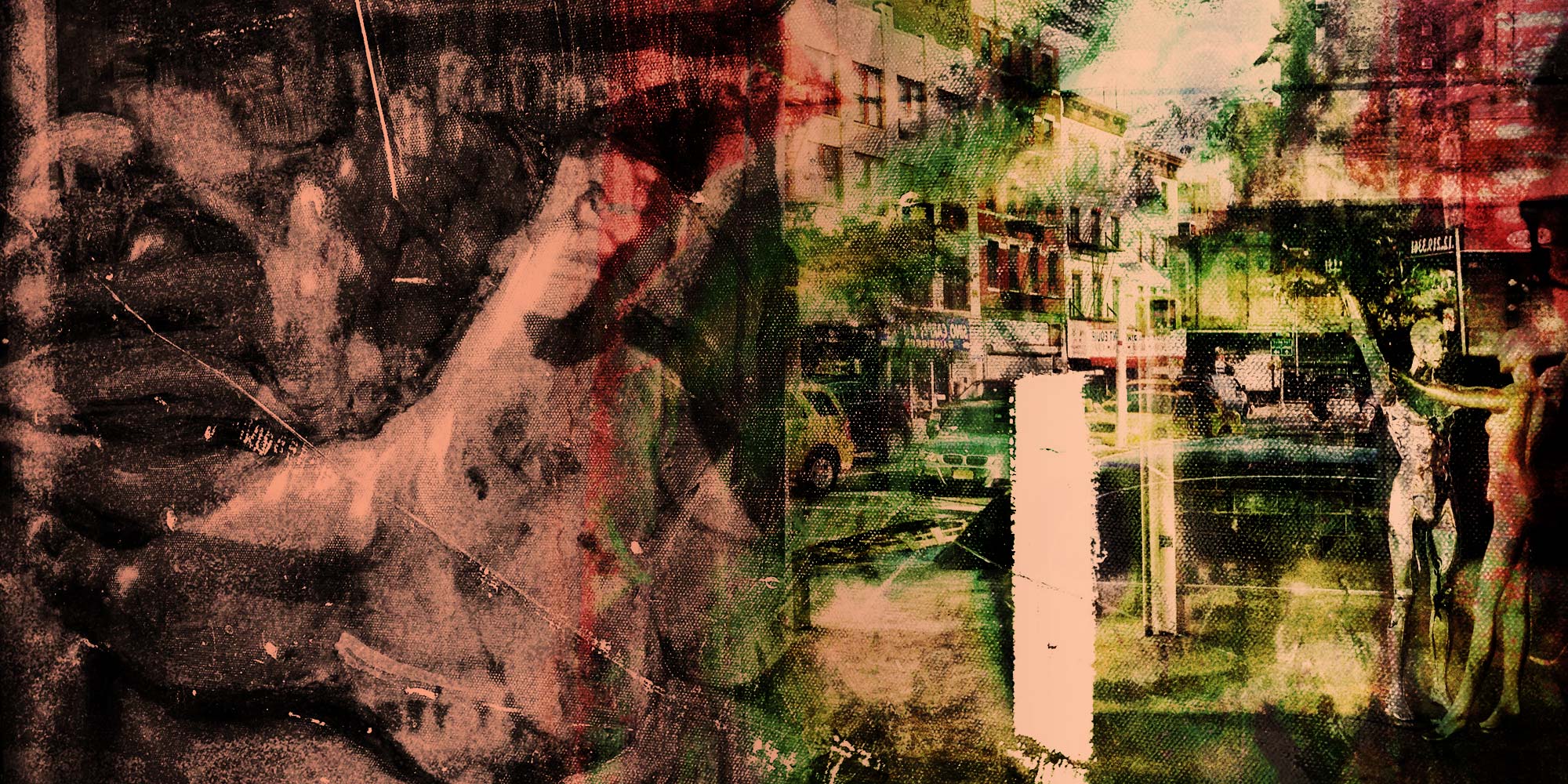
Urban Decay by MUG5, revealing an abstract reflection on urban decay and emotional resonance.
McQueen’s ability to blend art, fashion, and performance is central to how we approach our projects. His runway shows were immersive, multi-sensory experiences that engaged and moved people. At RIOT, we channel that same spirit into our creative productions, seeking to elevate each project into something larger than life. We create experiences that push the boundaries of media and storytelling, encouraging our audiences to see the world in unexpected ways.
The way McQueen embraced beauty in darkness also informs our approach. He taught us that art doesn’t need to be confined by convention or comfort; instead, it can be a space where beauty and brutality coexist. At RIOT, we’re drawn to the unconventional and the intense, to art that questions norms and evokes a visceral response. Whether it’s through a music video, a fashion film, or a brand campaign, we aim to tell stories that resonate on an emotional level, much like McQueen did through his collections.
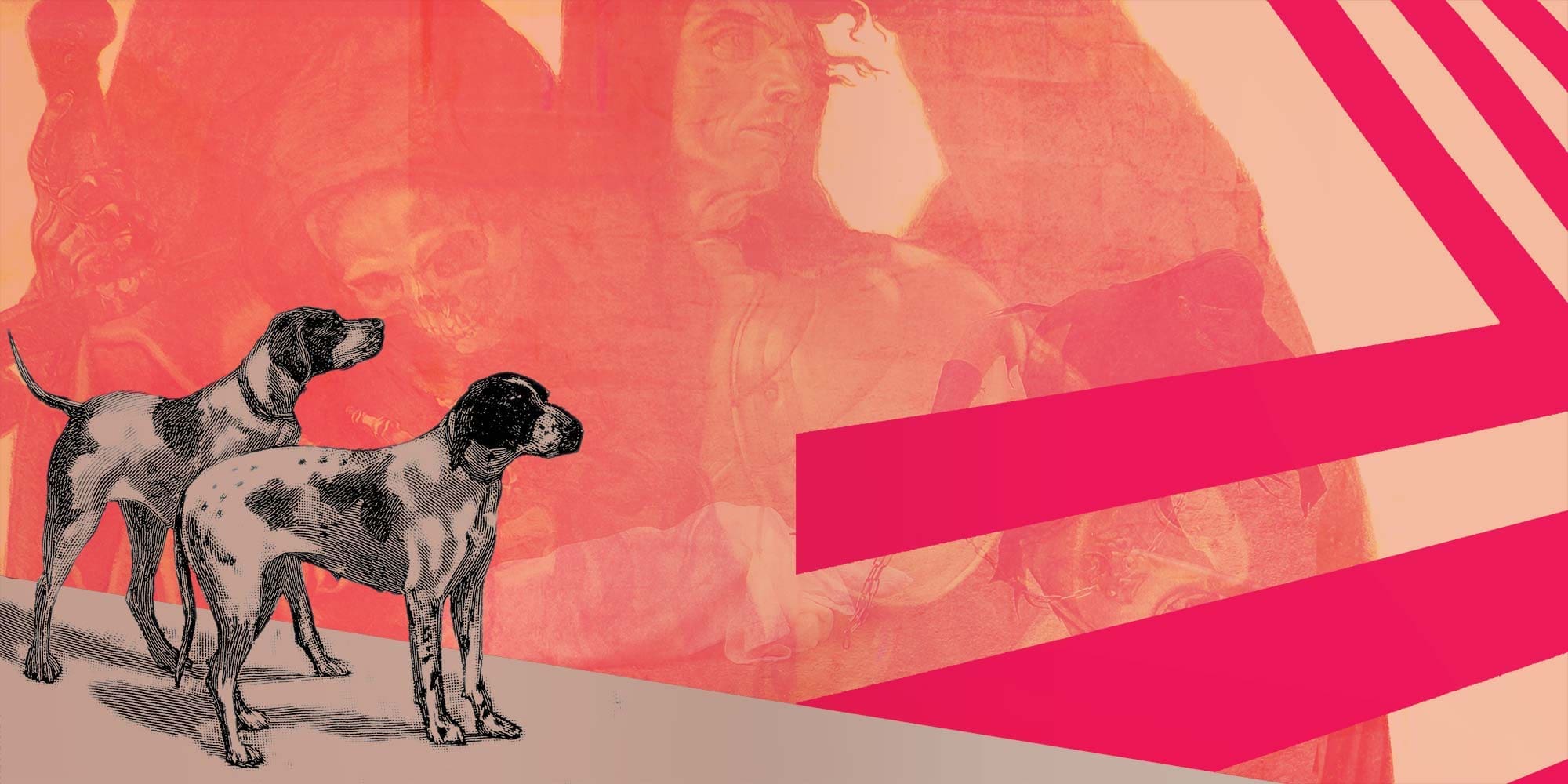
Watching Shadows by MUG5, juxtaposing two dogs against abstract background textures, blending classic imagery with vivid, graphic elements.
But perhaps the most profound connection we feel with McQueen is his belief that true creativity is an act of rebellion. McQueen never shied away from controversy, using fashion to confront societal issues and personal truths. That spirit of defiance is something we carry forward. We see each project as an opportunity to challenge the status quo, to create something that refuses to be ignored. In a world saturated with content, we want our work to be the kind that disrupts, that moves people, and that leaves a lasting mark. McQueen’s legacy reminds us to create fearlessly, to push beyond the surface, and to embrace the journey of discovery.
As we continue to grow and evolve, we carry Alexander McQueen’s legacy with us as a guiding light that fuels our drive to redefine what it means to be a creative agency. RIOT exists to embrace the unknown, take risks, and craft a path that reflects our vision. This article is a toast to the life and work of Alexander McQueen, a visionary who showed us all that art can—and should—shake us to our core.
“What’s the point of doing this if you’re going to stagnate?”

